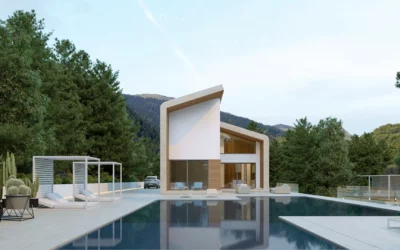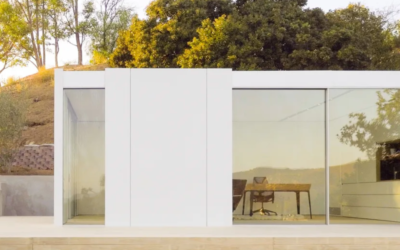
The global modular construction market size reached US$ 76.1 Billion in 2021. Looking forward, the publisher expects the market to reach US$ 109 Billion by 2027, exhibiting a CAGR of 6.17% during 2021-2027.
Companies Mentioned
- Algeco
- Balfour Beatty plc
- Bouygues
- Etex Group
- Guerdon LLC
- KLEUSBERG GmbH & Co KG
- Laing O’Rourke
- Larsen & Toubro Limited
- Lendlease Corporation
- Red Sea International
- Skanska AB
- Taisei Corporation
Modular construction refers to the off-site development of prefabricated engineered buildings in controlled industrial conditions. It involves the use of individual modules or sections, such as kitchens, bathroom pods and complete or partial rooms, manufactured in a facility using standard materials and code of construction.
These modules are further assembled at the building site and are reinforced with a self-supporting structure or an independent structural framework for multi-story buildings. In comparison to the traditionally used construction methods, modular construction is faster, cost-effective, sustainable and causes minimal disturbances and waste generation. It can also be conveniently disassembled, refurbished and relocated with low resource requirements.
Significant growth in the construction industry across the globe is one of the key factors creating a positive outlook for the market. Moreover, the increasing requirement for time and cost-effective construction solutions is providing a thrust to the growth of the market.
With the rising environmental consciousness among the masses, consumers are widely adopting permanent modular constructions (PMC) for developing sustainable commercial, industrial and residential complexes. They are also used for establishing custom-built rehabilitation clinics, emergency rooms, operating rooms, hospital extensions, laboratories, diagnostic centers and other medical facilities.
In line with this, widespread adoption of steel-based frames, wall panels and hot-rolled frameworks is also contributing to the market growth. They offer enhanced structural integrity, design flexibility, security and fire resistance. Additionally, the increasing utilization of lean manufacturing techniques and technologically advanced equipment is also favoring the market growth.
Other factors, including increasing expenditure capacities of the consumers, along with the implementation of favorable government policies promoting infrastructural development, are anticipated to drive the market toward growth.
Key Market Segmentation:
The publisher provides an analysis of the key trends in each sub-segment of the global modular construction market report, along with forecasts at the global, regional and country level from 2022-2027. Our report has categorized the market based on type, module type, material and end use.
Breakup by Type:
- Permanent
- Relocatable
Breakup by Module Type:
- Four Sided
- Open Sided
- Partially Open Sided
- Mixed Modules and Floor Cassettes
- Modules Supported by a Primary Structure
- Others
Breakup by Material:
- Steel
- Concrete
- Wood
- Plastic
- Others
Breakup by End Use:
- Residential
- Commercial
- Education
- Retail
- Hospitality
- Healthcare
- Others
Breakup by Region:
North America
- United States
- Canada
- Asia-Pacific
- China
- Japan
- India
- South Korea
- Australia
- Indonesia
- Others
Europe
- Germany/li>
- France
- United Kingdom
- Italy
- Spain/li>
- Russia/li>
- Others/li>
Latin America
-
- Brazil
-
- Mexico
- Others


